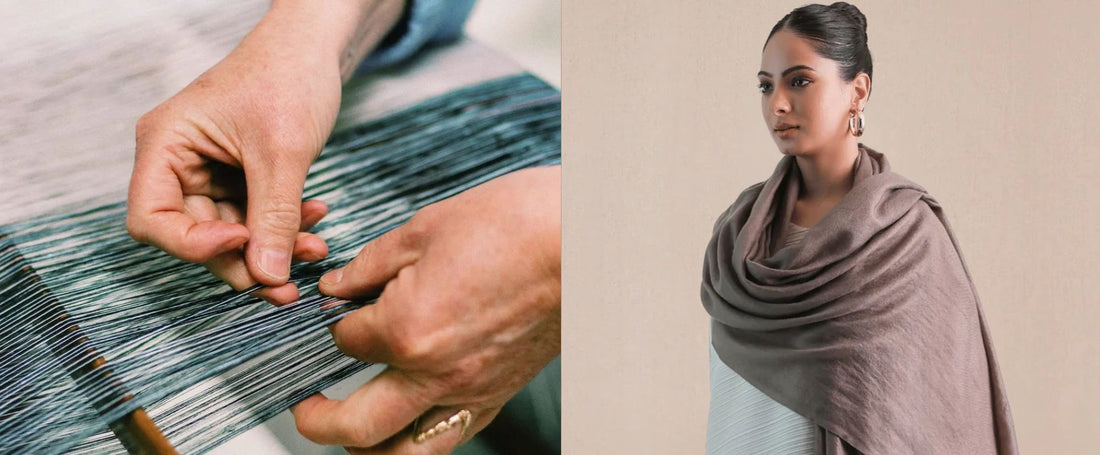Soft as a cloud, warm as a hug, and light as air — Cashmere is one of the most luxurious and sought-after fabrics in the world. But have you ever wondered why it costs so much more than regular wool?
At Shaza Life, we believe in the beauty of knowing your fabric — especially when it comes to mindful luxury. Let’s explore what makes Cashmere so special, and yes — so expensive.
What Is Cashmere?
Cashmere is a rare, fine wool obtained from the undercoat of Cashmere goats (most famously the Changthangi goats of Ladakh and Mongolia). This undercoat develops as a natural insulation during harsh winters and is combed out by hand each spring.
Unlike sheep's wool, Cashmere fibers are incredibly fine, soft, and lightweight — which is why the fabric feels so luxurious against the skin.
What Makes Cashmere So Special?
- Fineness: Cashmere fibers are much thinner (around 14–19 microns) compared to regular wool (around 30+ microns), giving it that signature buttery-soft texture.
- Warmth: Cashmere is 8x warmer than regular wool yet far lighter.
- Breathability: It keeps you warm without overheating.
- Durability: High-quality Cashmere, if cared for properly, can last a lifetime.
- Pill-Resistance: Fine cashmere pills less than synthetic blends, aging more gracefully.
Why Is Cashmere So Expensive?
1. Rarity of the Fiber
Each Cashmere goat produces only about 150–200 grams of usable fiber per year — just enough for one lightweight scarf. That’s a whole goat per shawl, if not more.
2. Labor-Intensive Process
From hand-combing the undercoat to sorting, spinning, and weaving by hand, Cashmere production is incredibly time-consuming and skilled. High-quality Cashmere is often handloomed, preserving artisan techniques.
3. Seasonal and Regional Dependency
Cashmere goats thrive in high-altitude, cold climates. Their rare undercoat only grows in harsh winters — meaning this fiber is seasonal and tied closely to nature’s cycle.
4. Sustainable, Ethical Production Costs
Artisan-led, ethical production prioritizes fair wages, small batch weaving, and eco-conscious dyeing — which naturally adds to the price but ensures a more sustainable product.
5. Authenticity vs. Blends
Many low-cost “cashmere” products on the market are actually blends or fakes. Pure Cashmere — especially that sourced from Himalayan or Mongolian regions — commands a higher price for its unmatched quality and authenticity.
Is It Worth the Investment?
Absolutely — if you choose the real thing.
A genuine Cashmere shawl isn’t just an accessory. It’s:
- A heirloom-quality piece
- A timeless style statement
- A support for artisan communities
- A symbol of conscious, slow luxury
Summarize: Feel the Difference
Cashmere is expensive not because of a label — but because of the journey behind every thread. When you wear it, you’re wrapped in nature’s finest fiber, touched by the hands of artisans, and warmed by something deeper than fashion.
At Shaza Life, we invite you to not just wear Cashmere — but to understand it, respect it, and cherish it.




